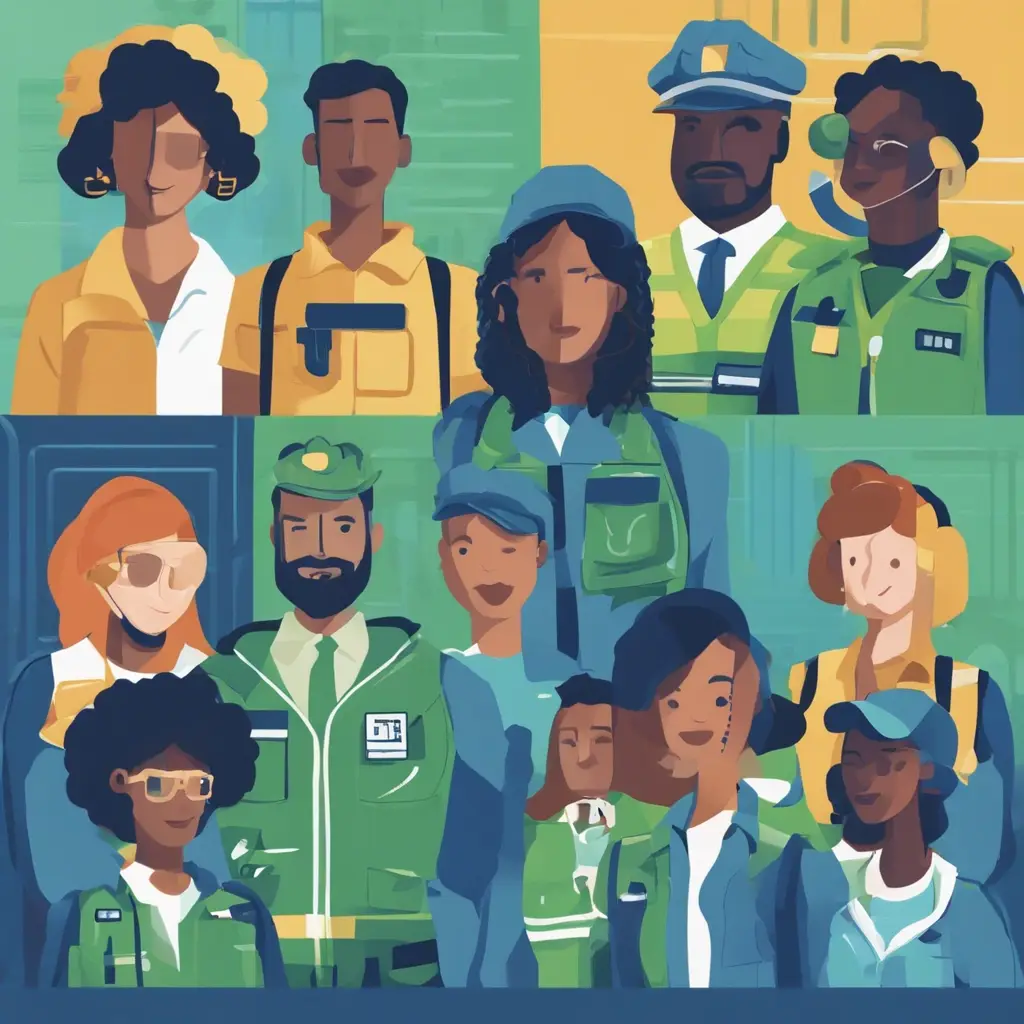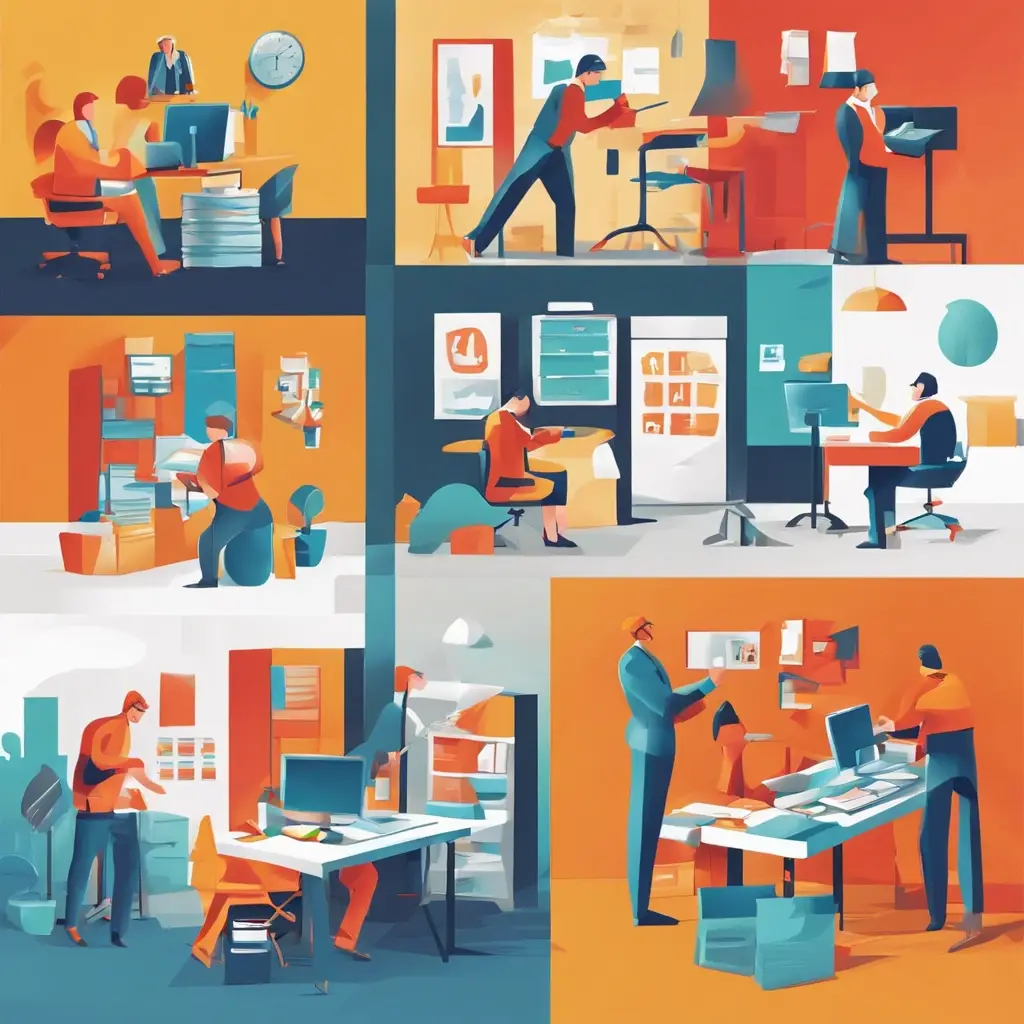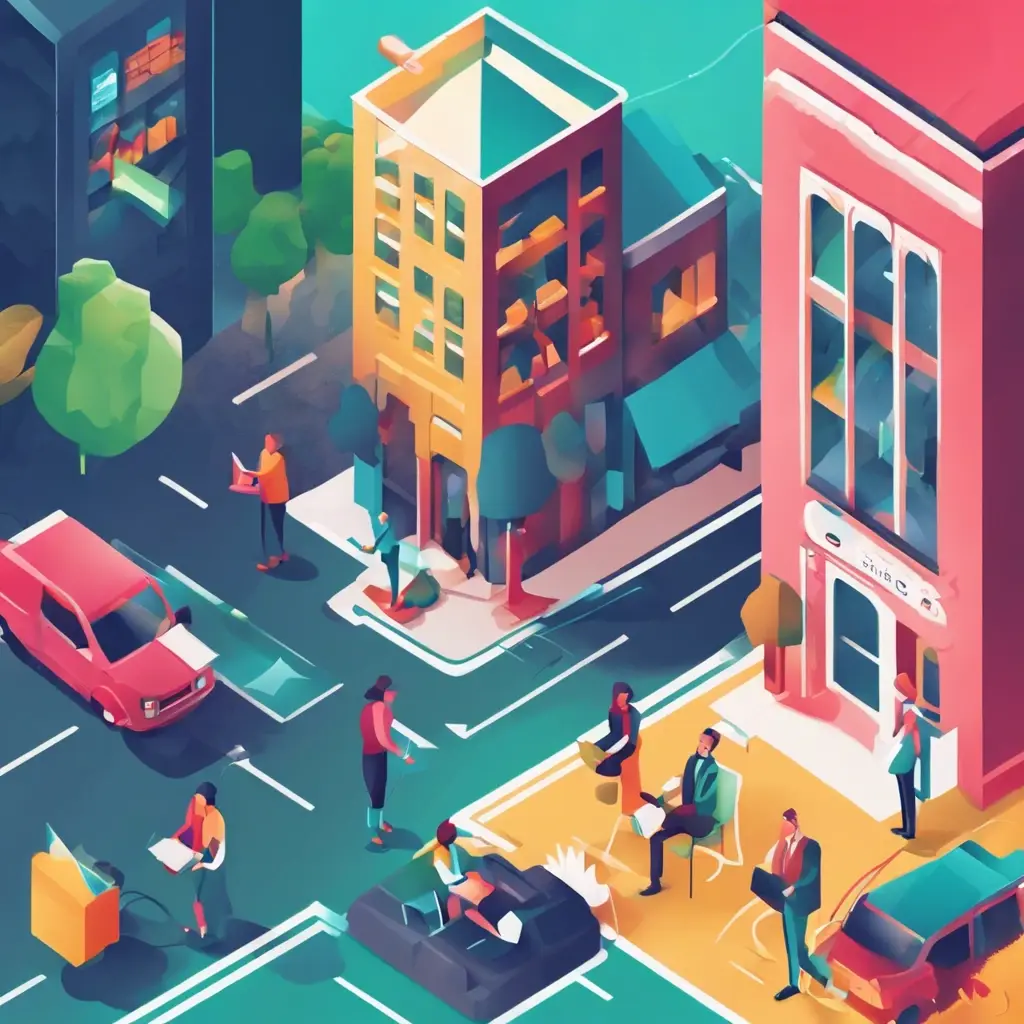Table of Contents
Pros and Cons of Gig Work vs Traditional Employment in Gig Economy
Is the traditional 9-to-5 job becoming a thing of the past? Today, the gig economy is changing how we view work. Nearly 40% of Americans are in gig work, and in Asia, too, such as Malaysia, 4 million workers, 26% of the workforce, participated in gig work as of 2020. This change is here to stay. I’ve seen a big shift in how people view their careers. The gig economy offers great flexibility and control over work hours. But it also has its own set of challenges. As someone who has tried traditional and freelance jobs, I often wonder: How does this new work world compare to the old one?Key Takeaways
- 39% and 26% of the U.S. and Malaysia workforce have participated in gig work
- Freelancers are becoming more skilled as gig work grows
- Over half of caregivers rely on freelancing for income
- 63% of freelancers report earning more than in traditional jobs
- 47% of independent workers value schedule control
- There are 53 million freelancers in the United States
The Gig Worker Experience
The gig economy has grown a lot in recent years. As a freelancer, I’ve seen how it’s changing our work life.Who are gig workers?
Gig workers are people who work on short-term projects for extra cash. We’re a mix of part-timers and full-time freelancers. Most of us are 43 years old and have families to support.Typical gig economy jobs
Gig work covers many fields. I’ve done writing and graphic design. Other gigs include driving for rideshares, delivering food, and web development. Now, even skilled tradespeople are joining the gig economy.Expansion of types of gig work into blue-collar jobs
The gig economy has expanded beyond food delivery and ride-hailing services to encompass various blue-collar jobs. This diversification offers more opportunities for workers seeking flexible employment in various industries. Some of the blue-collar gig jobs now available include:- Handyman services
- Moving and packing assistance
- Pet sitting and dog walking
- Gardening and lawn care
- Automotive repair and maintenance
- Massage therapy
- Courier and package delivery
- Personal shopping
- Product sampling and survey collection
- Barista
- Frontend F&B
- Kitchen assistant
- Cashier
- Sales assistant
- Stocker and stock associates
- Warehouse and logistics tasks
- Cleaning services
- Home repair and maintenance
Freelancers vs. traditional employees
Freelancers don’t get a steady paycheck or benefits like regular employees. We have to find our own work and handle our taxes. But we enjoy more flexibility and can earn more. About 70% of us love this flexibility.Part-timers vs. freelancers
Part-time jobs offer set hours and some benefits. Freelancers work on projects and don’t have set hours or benefits. The gig economy is growing. By 2027, most U.S. workers will be part of it. Whether you’re thinking of freelancing full-time or just for extra cash, knowing about gig worker life is key in today’s job market.Pros of Gig Work
Gig work offers exciting opportunities for those seeking career flexibility and autonomy. It provides unique advantages that traditional employment often can’t match.Flexibility and Autonomy
As a gig worker, I enjoy the freedom to choose when and where I work. This flexibility lets me create a schedule that fits my lifestyle. I can work from home, at a coffee shop, or even while travelling. This level of autonomy is especially valuable for balancing work and personal commitments.Diverse Work Opportunities
The gig economy offers a wide array of projects across various industries. I’ve had the chance to work on diverse projects, expanding my skill set and keeping my work interesting. This variety prevents boredom and helps me build a broad professional network.Potential for Higher Earnings
Gig work often has the potential for higher earnings than traditional jobs. For instance, a freelance software developer can typically charge more per hour than a company-employed software engineer. I’ve found that setting my own rates and taking on multiple projects increases my income potential. Similarly, using the FlashJobs online gig platform, you can choose the time and hourly rates to improve your flexibility and earn more. In effect, FlashJobs will further shape the dynamic of the work market, where employers will pay more for gig workers when urgent needs arise. Gig work seekers will travel to areas to match the demand of employers looking for staff. The idea is to maximize the potential earnings of gig workers.Work-Life Balance
The flexibility of gig work contributes significantly to achieving a better work-life balance. I can adjust my work hours to accommodate personal needs, pursue hobbies, or further my education. This balance leads to increased job satisfaction and overall well-being.“Gig work allows me to be my own boss and create a career that aligns with my personal goals and values.”While gig work comes with its challenges, the benefits of flexibility, diverse projects, higher earnings potential, and improved work-life balance make it an attractive option for many professionals in today’s evolving job market.
Cons of the Gig Economy
The gig economy offers flexibility, but it has its downsides. Job insecurity is a big issue for gig workers. With 1.3 million gig workers in the U.K., it’s important to understand these challenges.Job Insecurity and Inconsistent Income
Gig workers often worry about when they’ll get paid. Unlike regular jobs, gigs don’t offer steady work, which can cause financial stress and anxiety. Only 25% of U.K. gig workers depend on it as their main income.Lack of Benefits
One big issue with the gig economy is the lack of employee benefits. Gig workers don’t get healthcare, paid time off, or retirement plans. This can be tough during illness or financial trouble.Self-employment Challenges
Gig workers must handle their taxes and work expenses on their own. While some costs can be deducted, they can be hard to manage. The Trades Union Congress says the U.K. loses £4 billion a year because of lost taxes and higher in-work benefits from gig work.Skill Mismatch
Finding gigs that match your skills can be hard. Many gig workers struggle to find steady work in their field. This can lead to underemployment and frustration. Despite these challenges, the gig economy keeps growing. Workers should think about these downsides and benefits before joining the gig world.Traditional Employment: A Comparison
I’ve noticed a change in the job market, but traditional employment is still strong. Let’s explore what it offers versus the gig economy.Stability and Predictability
Traditional jobs are known for their stability. I can rely on a steady paycheck and set work hours. This predictability makes it easier to plan my life and budget.Employee Benefits and Protections
Traditional jobs come with great benefits. You get health insurance, retirement plans, and paid time off. These benefits offer a safety net not found in gig work.Career Advancement Opportunities
Traditional employment often has clear paths for moving up. I’ve seen many companies offer training and promote from within. This gives me a chance to advance in my career.Structured Work Environment
Traditional jobs have a structured work environment. I enjoy having a dedicated workspace and regular meetings with colleagues. This setup helps build teamwork and a strong company culture.| Aspect | Traditional Employment | Gig Economy |
|---|---|---|
| Income | Stable, predictable | Variable, unpredictable |
| Benefits | Comprehensive package | Limited or none |
| Career Growth | Clear advancement paths | Self-driven development |
| Work Environment | Structured, office-based | Flexible, often remote |
Advantages of Gig Work over Traditional Employment
Gig work has unique benefits that distinguish it from traditional jobs. It offers work freedom, skill development, and the chance to work from anywhere, which are hard to find in regular jobs.Freedom to Choose Work
One big plus of gig work is choosing projects I like. This freedom lets me work on different projects and set my own schedule. In fact, 44% of U.S. freelancers make more money than in a regular job. This shows the earning potential of this flexible work.Skill Development Across Industries
Gig work lets me work in various industries, which helps me grow my skills. With 26% of U.S. freelancers having a postgraduate degree, this is very valuable. It allows me to use and improve my skills in different fields.Location Independence
Being able to work from anywhere is a big plus of gig work. This makes my work and personal life better balanced. Millennials, who make up 45% of the U.S. gig workforce, really like this flexibility.| Aspect | Gig Work | Traditional Employment |
|---|---|---|
| Work Selection | Choose projects freely | Assigned tasks |
| Skill Growth | Diverse industry exposure | Limited to a specific role |
| Location | Work from anywhere | Office-bound typically |
| Schedule | Flexible hours | Fixed work hours |
Disadvantages of Gig Work Compared to Traditional Jobs
Gig work is flexible but has big downsides compared to traditional jobs. I’ve seen many challenges that gig workers face today.Career Limitations and Inconsistent Income
One big issue with gig work is the lack of clear career growth. Unlike regular jobs, gig work often doesn’t offer a clear path for moving up. This can lead to career limits and not growing in your job. Also, the income can be unpredictable. In some months, you might earn a lot, while in others, you might struggle to get by.Social Isolation and Tax Responsibilities
Many gig jobs are done remotely, which can lead to feeling isolated. Without regular work hours, gig workers miss out on daily chats with coworkers. They also have to handle all their taxes by themselves. This means figuring out complex tax laws, saving for taxes, and planning their finances.Platform Exploitation and Lack of Benefits
Many gig workers face being taken advantage of by online platforms that take big cuts from their pay. These platforms often focus on making more money than taking care of workers. Unlike regular employees, gig workers usually don’t get benefits like health insurance or retirement plans. This can make them financially unsure in the future.| Aspect | Traditional Jobs | Gig Work |
|---|---|---|
| Income Stability | Regular paycheck | Inconsistent income |
| Career Growth | Structured advancement | Limited opportunities |
| Social Interaction | Daily workplace interactions | Potential social isolation |
| Benefits | Health insurance, retirement plans | No employer-provided benefits |
| Tax Handling | Traditional Employer manages taxes | Self-managed tax responsibilities |
Impact on Companies and Workers
The gig economy has changed how companies use gig workers. I’ve seen how companies are changing their workforce to stay ahead and save money.How Businesses Utilize Gig Workers
Companies use gig workers for many reasons. They can easily grow or shrink their teams without the costs of full-time jobs, which allows them to adjust quickly to market changes.| Industry | Gig Worker Percentage | Primary Benefits |
|---|---|---|
| Transportation | 36% | On-demand service |
| Hospitality | 25% | Flexible accommodations |
| I.T. | 20% | Specialized skills |
Changing Dynamics in the Workforce
The way we work is changing fast. Gig work is replacing old job models by combining gig and traditional jobs. This change requires new ways of managing and working together.Balancing Gig and Traditional Workers
Finding a balance between gig and traditional workers is key. While 42% of gig workers may have unstable incomes, they offer special skills and flexibility. Companies must find ways to keep their teams together and save money. The gig economy has benefits and drawbacks. As companies adjust, they must consider how it will affect their future and work culture. The future of work will likely combine gig and traditional jobs.Future Trends in the Gig Economy
I’ve been watching the gig economy grow rapidly over the past decade. The gig economy growth shows no signs of slowing down. In 2017, 55 million Americans were gig workers. That’s 34% of the U.S. workforce! By 2023, it’s expected to reach 43%.Top 10 Countries with the Fastest Growing Earnings for Freelancers
| Country | Growth Percentage |
|---|---|
| USA | 78% |
| United Kingdom | 59% |
| Brazil | 48% |
| Pakistan | 47% |
| Ukraine | 36% |
| Philippines | 35% |
| India | 29% |
| Bangladesh | 27% |
| Russia | 20% |
| Serbia | 19% |
Growing Gig Workforce
Economic uncertainties often push more people into gig work. Industries like transport, tech, creative services, and healthcare are feeling the biggest impact. The economic impact of gig work is huge. In 2018, the global gig economy generated $204 billion!Evolving Labor Laws, Official Definitions and Court Cases
Labour law evolution is trying to keep up with this shift. Gig workers often lack health insurance, retirement plans, and paid leave. New laws aim to protect these workers while maintaining the flexibility that draws many to gig work. In July 2020, researchers from the UCL Institute for Innovation and Public Purpose suggested a new way to think about gig workers. They said we should look at how much control the company has over the worker and how much the worker relies on the company. Some gig workers are independent, choosing their jobs and not depending on just one app or company. However, many others are what we might call “dependent contractors” rather than independent contractors. These workers rely heavily on specific apps or platforms to get work, and the companies often control important parts of their freelance activities, such as finding work. This idea challenges the typical view of all gig workers as independent contractors. It suggests that we might need different rules for different types of gig work, depending on how much freedom and independence the workers have. In response to the growing gig economy, new laws have been created to address gig workers’ unique challenges. One notable example is California’s Assembly Bill 5 (AB5), which went into effect in 2020 and aimed to reclassify many gig workers as employees, entitling them to benefits and protections. Other jurisdictions have also introduced legislation to regulate gig work, such as the Self-Employment Social Security Act 2017 in Malaysia, which provides social security coverage for self-employed individuals in certain industries. As the gig economy evolves, more definitions of gig workers have emerged. The International Labour Organization (ILO) defines gig work as “short-term, temporary, or freelance work often facilitated by digital platforms.” The World Bank describes gig workers as “independent contractors, online platform workers, contract firm workers, on-call workers and temporary workers.” These definitions highlight the diverse nature of gig work and the need for comprehensive legal frameworks to address the unique challenges faced by this growing workforce segment. As the gig economy continues to expand, courts are also weighing in on the status of gig workers, often with varying interpretations. A significant court case in Malaysia in 2022 has set a precedent in the legal interpretation of gig workers’ definition. In this case, the High Court affirmed the Industrial Court’s decision, dismissing the appellant’s submission and ruling that e-hailing drivers are not employees but independent third-party contractors. This ruling highlights the ongoing challenges in defining and classifying gig workers within existing legal frameworks and underscores the need for more comprehensive and nuanced approaches to labour laws in the gig economy.Technology’s Role
Technology in gig work is key. Digital platforms connect workers with jobs globally. This tech boom streamlines processes and enables remote work. It’s opening doors to a diverse, worldwide talent pool. This could lead to more innovation and a wider range of skills in the workforce. The future of work might be a mix of gig flexibility and traditional job stability. It’s an exciting time, full of opportunities and challenges for workers and businesses.Making a Choice: Gig Work or Traditional Employment?
Choosing between gig work and traditional jobs is a big decision. It’s not the same for everyone. You must carefully think about your lifestyle, goals, and money needs.Assessing Personal Preferences and Lifestyle
I look at what kind of work I like and how I like to spend my days. Do I do well with a set schedule, or do I prefer to have my own plan? Gig work gives a lot of, with 36% of workers now in the gig economy. This is great for fitting work around other parts of your life, like school or taking care of kids.Evaluating Financial Goals and Stability Needs
Thinking about money is key when deciding. Gig work can be unpredictable and doesn’t always offer the same benefits as a regular job. Only 40% of gig workers get health insurance. But saving 25-30% of your gig earnings for taxes is smart. Some gig workers can even make more money than those with traditional jobs.Considering Long-term Career Aspirations
My future career goals are important in this choice. Traditional jobs usually have clearer paths for moving up. But, the gig economy is growing fast – three times faster than the U.S. workforce. This could mean more chances to learn new skills and gain diverse experiences.| Factor | Gig Work | Traditional Employment |
|---|---|---|
| Flexibility | High | Low to Moderate |
| Income Stability | Variable | Stable |
| Benefits | Limited | Comprehensive |
| Career Advancement | Self-Driven | Structured |
Conclusion: Pros and Cons of Gig Work and Navigating the Modern Workforce
The modern workforce is changing fast. The gig economy and traditional jobs now mix, offering flexibility and stability. This change is big for everyone in the job world.Balancing self-effort, flexibility and stability with extra income
The gig economy has changed how we earn extra money and gain new skills. McKinsey Global Institute says 30% of freelancers now earn most of their income this way. This shows how important finding a good work-life balance has become. Millennials, who make up 25% of gig workers, are finding ways to mix gig jobs with regular jobs, which helps them get more out of their lives. However, this responsibility requires more awareness of the downside of being an independent contractor. You will get less benefit if you are on your own compared to working in traditional employment. You need to take a more proactive role in understanding your rights as a partner in a working relationship so your rights are not further undermined. The short-term might be good, though you also need to be aware of the long-term prospects for yourself as a gig worker, such as retirement plans and insurance.The future of work: A hybrid model?
Looking into the future, work might blend traditional and gig jobs together. Intuit’s 2020 Report says over 40% of workers could be in gig jobs by the next decade. This means we’ll need to be more flexible in how we work. As a journalist, I think this hybrid model could lead to better careers and a stronger workforce. It’s about finding the best parts of both worlds. The job world is changing fast, and it’s important for workers and employers to keep up. There are challenges like unstable income and different benefits. But, there are also big chances for growth and flexibility. Finding the right mix of gig and traditional jobs will help us navigate this new work landscape.FAQ
What is the gig economy?
The gig economy involves people working short-term jobs, often on a freelance basis. They earn money through various short-term tasks, different from traditional full-time jobs.
Who are gig workers?
Gig workers make money through freelance or contract jobs. They can do everything from short tasks to long projects. This group includes people with many different skills and working on their own terms.
What are the advantages of gig work?
Gig work offers flexibility and the chance to choose your projects. You can earn more and have a better work-life balance. It also lets you develop skills across various industries and work from anywhere.
What are the disadvantages of gig work compared to traditional jobs?
The downsides include job insecurity and no benefits like health insurance. You might face unstable income and have to handle taxes and expenses yourself. There’s also less chance for career growth and social interaction at work.
How does traditional employment differ from gig work?
Traditional jobs offer stability, predictable pay, benefits, and a structured work environment. However, they might limit flexibility and the chance to try different things.
How do businesses utilize gig workers?
Companies use gig workers to save money and be more flexible. They can easily adjust their workforce without the costs of full-time staff. But, they might struggle with quality control and team culture.
What are the future trends in the gig economy?
The gig economy is set to grow, especially in tough economic times. Laws are changing to better protect gig workers, and technology is key in connecting workers with jobs worldwide.
How can individuals choose between gig work and traditional employment?
Choosing depends on what you want for your life and career. Consider how much you value flexibility versus stability, as well as your financial and career goals.
Source Links
- The Gig Economy: Definition, Pros & Cons, and Finding Jobs – https://www.flexjobs.com/blog/post/what-is-the-gig-economy-v2/
- Gig Economy: Examining the Pros and Cons of Freelancing and Independent Contracting – https://www.linkedin.com/pulse/gig-economy-examining-pros-cons-freelancing-independent-contracting
- The Pros, Cons, and Benefits of the Gig Economy 2022 – https://accendotechnologies.com/blog/gig-economy-pros-and-cons/
- What does the Gig Economy Offer that Traditional Employment Doesn’t? | Shortlister – https://www.myshortlister.com/insights/what-does-the-gig-economy-offer
- Gig Economy Pros And Cons: Everything You Need To Know In 2024 – https://www.positiveaccountant.com/gig-economy-pros-and-cons
- Positives And Negatives Of Working In The Gig Economy – https://afeusa.org/articles/positives-and-negatives-of-working-in-the-gig-economy/
- Advantages and Disadvantages of Gig Economy (Businesses and Employees) – https://nativeteams.com/blog/gig-economy-advantages-and-disadvantages
- What are the pros and cons of working in the gig economy? – https://www.barclaysimpson.com/what-are-the-pros-and-cons-of-working-in-the-gig-economy/
- What is Gig Economy, Pros and Cons of Companies & Workers? – https://www.fieldengineer.com/skills/gig-economy-pros-and-cons
- The Gig Economy: Transforming Traditional Employment Landscape – https://www.scissorsapp.com/ultimate-staffing-agency/gig-economy/how-the-gig-economy-affects-traditional-employment/
- The Pros and Cons of the Gig Economy – https://www.wgu.edu/blog/pros-and-cons-gig-economy1808.html
- Will Gig Economy Replace The Traditional Employment – https://upstackhq.com/blog/remote/will-gig-economy-replace-the-traditional-employment
- The Gig Economy: Shaping the Future of Work and Business | Park University – https://www.park.edu/blog/the-gig-economy-shaping-the-future-of-work-and-business/
- The Pros and Cons of Gig Work – https://afeusa.org/articles/the-pros-and-cons-of-gig-work-exploring-the-economic-benefits-of-productivity-and-employment/
- What Is a Gig Economy? – https://www.investopedia.com/terms/g/gig-economy.asp
- Evaluating Short-Term Gigs vs Full-Time Roles – ClearRock – https://clearrock.com/evaluating-short-term-gig/
- Pros and cons of joining the gig economy | Good MBA Guide – https://www.goodmbaguide.com.au/mba-news/pros-and-cons-of-joining-the-gig-economy
- Analyzing the Impact of the Gig Economy on Workers and Employers – https://royalexaminer.com/analyzing-the-impact-of-the-gig-economy-on-workers-and-employers/
- The rise of gig work and its impact on traditional employment – https://www.linkedin.com/pulse/rise-gig-work-its-impact-traditional
- The Gig Economy: Pros, Cons, and What It Means for the Future of Work – https://thisizyoussef.medium.com/the-gig-economy-pros-cons-and-what-it-means-for-the-future-of-work-bf8e1bd4f047
- The Rise of the Gig Economy: Pros and Cons for Workers and Employers – I.T. Supply Chain – https://itsupplychain.com/the-rise-of-the-gig-economy-pros-and-cons-for-workers-and-employers/
- The Gig Economy and the Future of Work: Challenges and Opportunities – https://www.linkedin.com/pulse/gig-economy-future-work-challenges-opportunities-santosh-g-vxwyc
- What Is a Gig Economy? | Pros and Cons of Gig Economies – https://www.netspend.com/blog/pros-and-cons-of-working-in-gig-economies
- The Gig Economy’s Impact on Traditional Workplaces – https://www.aretecoach.io/post/the-gig-economy-s-impact-on-traditional-workplaces
- Gig Worker Vs Independent Contractor: What’s The Difference? – https://www.positiveaccountant.com/gig-worker-vs-independent-contractor
- The Pros and Cons of the Growing Gig Workforce – – https://blog.culturewise.com/pros-cons-gig-workforce
- Pros and Cons of the -Gig Economy- for ((Workers)) – https://medium.com/@natasha.jafari7777/pros-and-cons-of-the-gig-economy-for-workers-e497024248ef
- Gig Workers in Malaysia: A Review of Definition & Estimation –https://www.dosm.gov.my/v1/uploads/files/6_Newsletter/Newsletter+2020/DOSM_MBLS_1-2020_Series-8.pdf
- Establishment of commission ensures gig workers receive due protection, benefits – https://www.nst.com.my/news/nation/2024/03/1020323/establishment-commission-ensures-gig-workers-receive-due-protection
- Research and advocacy of progressive and pragmatic policy ideas – https://www.centre.my/post/global-trends-in-gig-worker-policies-and-its-lessons
- California’s AB5 Gig-Worker Law – https://www.nolo.com/legal-encyclopedia/california-gig-worker-law-AB-5.html
- Gig employees in Malaysia to enjoy the same rights as formal employees – https://hrmasia.com/gig-employees-in-malaysia-to-enjoy-same-rights-as-formal-employees/
- Transforming APAC’s Gig Economy: The Role of Employment Law https://www.apac-insider.com/transforming-apacs-gig-economy-the-role-of-employment-law/ California Assembly Bill 5 (AB5): What’s in It and What It Means https://www.investopedia.com/california-assembly-bill-5-ab5-4773201
- Rights of Gig Workers in Malaysia – https://www.richardweechambers.com/rights-of-gig-workers-in-malaysia/
- Gig economy workers can take on employers under new laws allowing the ‘right to disconnect’ – https://www.abc.net.au/news/2024-02-09/industrial-relations-changes-pass-parliament-gig-economy-workers/103443236






